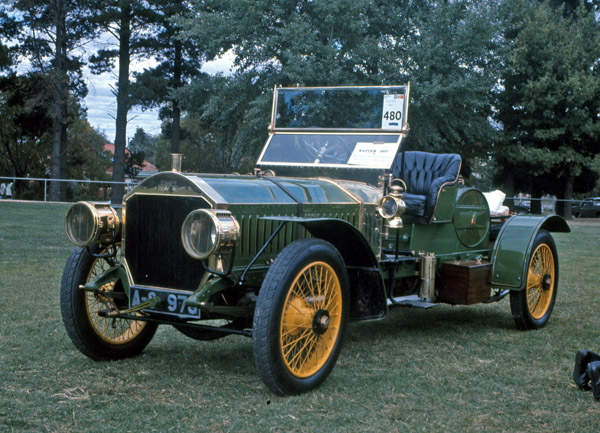Early production Napiers were twin-cylinder engined machines but these were soon followed by a four-cylinder model. In 1904 Napier built a straight-six variant. Being happy with this engine’s performance Napier developed a whole series of magnificent ‘sixes’ culminating in the rare circuit racing types with engines up to 12 litres.
The 60hp (approx 45 kW) model of 1905 to 1910 had a front-mounted engine driving the rear wheels with a separate chassis. Its 7.7-litre side-valve engine was fuelled by a single Napier carburettor. This was the third version of Napier’s sixes, and was followed by several more in the following decade. It had a pressed steel chassis frame and was offered with a choice of magnificent formal coachwork.
At that time Napiers were among the fastest, most costly and most prestigious British cars available. It has often been stated that with a little more luck and perhaps a little less hype, Napier might have beaten Rolls-Royce in the British prestige car stakes.
By 1908, Napier was offering a range of sixes from the 4.9-litre 30 and 40, the 6.1-litre 45, the 7.7-litre 60, to the 9.7-litre 65. These were all based on the side-valve engine originally inspired by Mr SF Edge, who had joined the company in 1900 as sole distributor, racing personality and promoter.
These models also had shaft drive but were only fitted with rear wheel brakes. By the early 1910s Napier was offering far too many different models produced by a factory which had never built more than 800 cars in a year.
They were soon overtaken in the prestige section of the car market by the Rolls-Royce 40/50 Silver Ghost. SF Edge moved on in 1912 and Napier’s reputation soon slumped.









